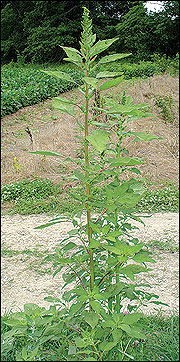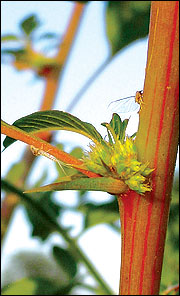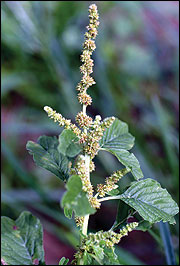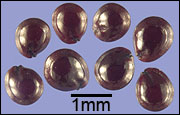Reviewed
Pigweed
- Amaranthus spp.
- Carelessweed, Redroot amaranth, Water hemp, Wild beet
Forb
Description
About a half dozen species of pigweed are common in the Midwest, often found in abundance in moist or disturbed areas. Leaves are alternate and simple. Small green or tan flowers produce small, round, shiny black seeds. The roots are red when pulled. Depending on the species, pigweed may grow 1 to 8 feet tall.
Bloom period
June to October
Use by bobwhites
Pigweeds produce many seeds, which despite their small size, are regularly and abundantly consumed by bobwhites. Birds have been known to grasp the stem with their bill and strip seeds directly off the plant. Pigweed seed is available after snow has buried many other quail foods. Its occurrence on disturbed ground makes it attractive for brood rearing as well.





